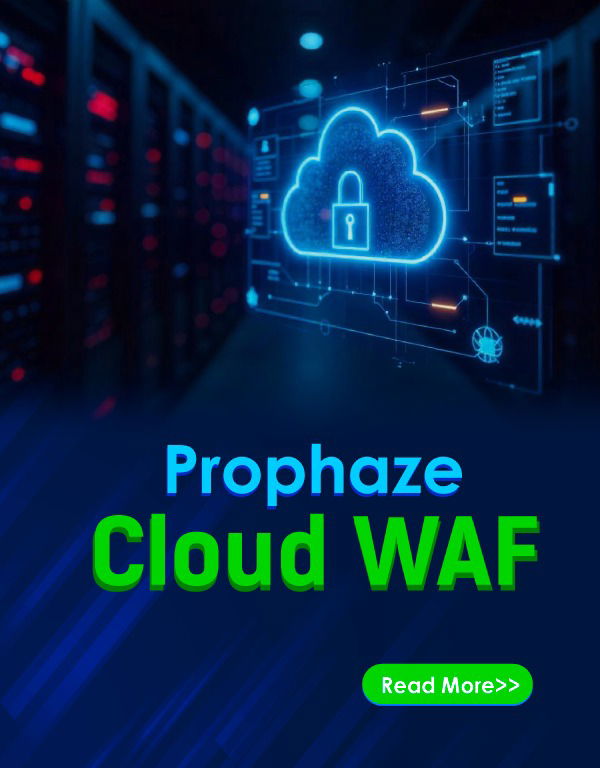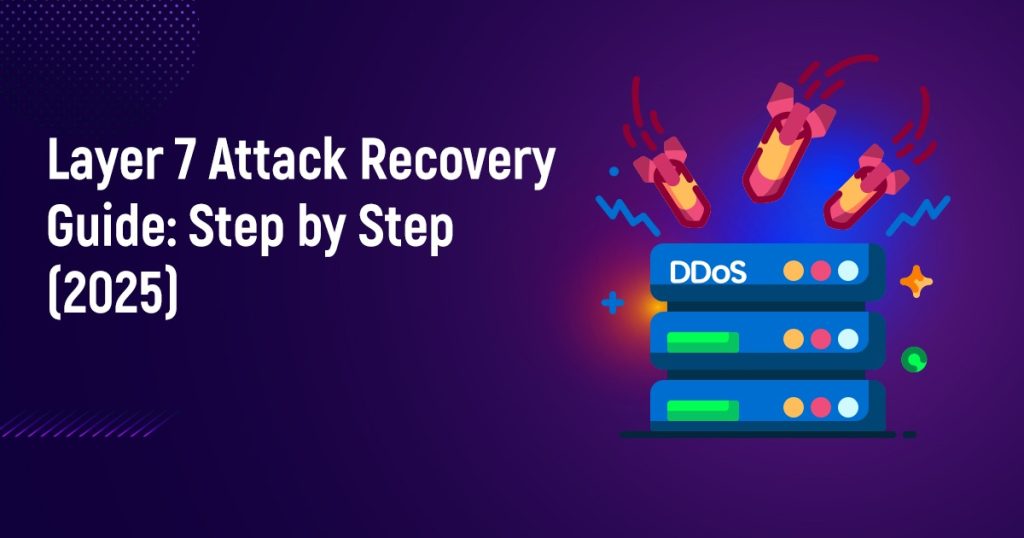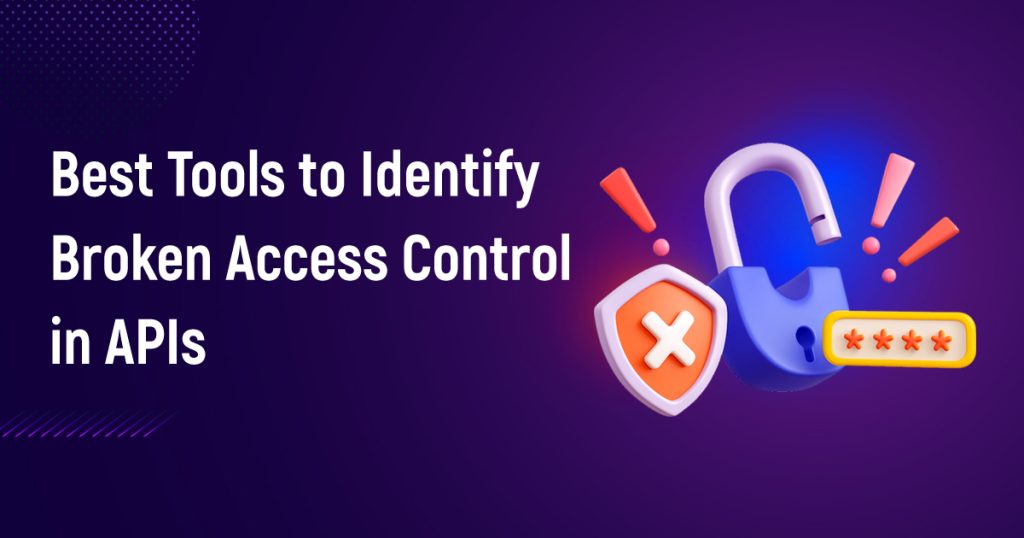What Is WAF Logging?
- 5.3k Views
- 7 min. read
Introduction to WAF Logging?
A Web Application Firewall (WAF) supervises, filters, and restricts HTTP traffic to and from web applications. Acting as a barrier between the internet and web apps, it protects them from threats like SQL injection, cross-site scripting (XSS), and application-layer DDoS attacks. If you’re asking what a WAF is, it’s fundamentally a security filter aimed at inspecting and managing web traffic based on established policies.
WAF logging captures comprehensive logs of the traffic and the WAF’s corresponding actions. These logs document essential information about incoming requests, the actions taken (allow, block, monitor), and the specific rules that initiated those responses. Grasping how a WAF works is crucial for analyzing this logged information to ensure optimal security and performance.
Its Importance: Without logging, there is no insight into the WAF’s operations, specifically, what threats it is preventing. Logging is fundamental for security assessment, incident response, and compliance checks.
What Data Is Captured in WAF Logs?
WAF logs include structured records of the web traffic analyzed by the firewall. Typically, these logs consist of:
-
Timestamp of the request
-
Client IP address and location
-
HTTP method and URI
-
Response code
-
Action taken (allow, block, count)
-
Triggered WAF rules
Each log entry reveals how a WAF policy was implemented for individual requests. They also assist in identifying if a WAF rule is activated based on known attack patterns. Occasionally, inadequate rule tuning can result in a false positive, preventing legitimate users from accessing the service.
In more sophisticated solutions, logging might encompass behavior-based insights and predictive analytics through WAF behavior analysis, prompting inquiries like: What is WAF machine learning? This trend toward preemptive security models aims to mitigate threats before they escalate.
How Does Real-Time Security Event Tracking Function?
While raw log data offers essential insights, its real power lies in real-time usage to uncover and react to threats as they occur.
Real-time event tracking within WAFs enables security teams to identify and address attacks as they unfold. Logging starts as soon as a request is analyzed, granting immediate awareness of malicious activities.
This strategy supports:
-
Instant notifications
-
Automatic corrections
-
Threat intelligence integration
-
Workflow automation
It is particularly effective against advanced attacks where hackers may circumvent a WAF using obfuscation or polymorphic payloads. Understanding how WAF detects new threats is vital for maintaining a proactive security posture.
How WAF Logs Help with Forensic Investigations
In many breaches, the full scope of the attack only becomes clear after the fact. This is where forensic WAF logging becomes crucial.
Post-incident analysis depends on logs to determine:
-
The attack's origin (IP address, country, user agent)
-
The method employed (e.g., SQL injection, XSS)
-
Activated rules and corresponding actions
-
Session and application behavior over time
Logs aid in determining whether an attack was unnoticed due to a WAF false negative, where harmful traffic was not recognized. They also provide insights into the WAF evasion strategies attackers employed to circumvent detection.
This documentation supports digital forensics and incident response teams by outlining how a WAF security rule functioned, whether it succeeded or failed. Consequently, they illuminate common WAF limitations by indicating coverage deficiencies, rule misconfigurations, or logical errors.
How Are WAF Logs Integrated with SIEM Platforms?
To contextualize these insights, WAF logs need to be combined with central systems that correlate information across various platforms, such as SIEMs.
Security Information and Event Management (SIEM) systems gather, compile, and correlate log data from various components of an organization’s infrastructure, including WAFs.
Why integrate WAF with SIEM?
-
Centralized insights
-
Event correlation across multiple layers
-
Automated notifications and triage
-
Retention of historical data for audits
This integration addresses the question: How does WAF integrate with SIEM? This collaboration enables security teams to visualize attack paths, detect irregularities, and enhance threat identification using information from several systems.
The logs also contribute to broader threat modeling, where the best approaches in configuring a WAF ensure that logs are thorough and classified correctly before being sent to a SIEM.
What Are Common WAF Log Formats
After generating logs in a usable format, the next step is effective analysis, transforming raw data into practical intelligence. WAF logs can be formatted in various ways, including:
-
JSON (JavaScript Object Notation)
-
XML (Extensible Markup Language)
-
CSV (Comma-Separated Values)
JSON is the most prevalent format due to its flexibility and compatibility with log management systems. The format used determines the ease of parsing and examining logs. Selecting the incorrect format or misinterpreting its structure may result in WAF misconfigurations and gaps in analysis.
The format also influences the speed at which analysts can review logs when investigating how WAF blocks XSS attacks or clarifying what a WAF signature is in the context of pattern-based detection.
How to Analyze WAF Logs Effectively
Analyzing WAF logs requires suitable tools and expertise to identify significant patterns and irregularities. Some effective strategies include:
-
Filtering logs by action or severity
-
Grouping logs by IP address or endpoint
-
Correlating events with known vulnerabilities
-
Visualizing trends over time
This is crucial for tracking types of attacks and understanding concepts such as WAF vulnerabilities or WAF false negatives regarding undetected exploits. A thorough understanding of the different types of WAF also assists in analysis, as behavior and logging specifics vary between cloud-based, on-premise, and hybrid models.
What Are the Compliance Advantages of WAF Logging?
Beyond security advantages, thorough log analysis plays a pivotal role in adhering to industry regulations and audit standards.
WAF logs are fundamental to compliance in fields such as finance, healthcare, and e-commerce. Regulatory requirements typically mandate:
-
Log retention for a designated timeframe
-
Immutable storage (preventing tampering)
-
Role-based access restrictions
-
Centralized archiving and retrieval
Detailed logs assist auditors in verifying the effectiveness of controls like IP blacklisting and IP whitelisting in WAF. They also serve as proof of due diligence in the event of a breach or suspected insider activity.
A well-planned logging strategy supports rate limiting in WAF by monitoring request volume and enforcing access policies against abuse or brute-force attempts.
How Prophaze WAAP Enhances Advanced Logging
Prophaze WAF is specifically designed to provide strong and flexible logging capabilities suitable for enterprise-grade security operations.
By integrating real-time event tracking, comprehensive forensic data, and smooth SIEM integration, Prophaze enables organizations to maintain full control over their application security posture.
Prophaze offers:
-
Real-time log streaming with attack signatures and threat levels
-
Easy export to cloud-based storage and log analysis systems
-
In-depth analytics to detect anomalies and optimize firewall behavior
-
Logging that supports AI-driven WAF insights for threat detection
Furthermore, administrators can define advanced WAF security policies by customizing detection rules, behavior thresholds, and incident workflows—all while utilizing actionable insights from historical log data.
Whether you’re auditing security or probing a breach, Prophaze guarantees you the visibility, control, and context necessary to stay ahead of emerging threats.
Why WAF Logging Is Critical in 2025
WAF logging is not merely a technical requirement—it’s a fundamental aspect of any mature security strategy.
By capturing every interaction between users and your web application, logs provide a crucial line of visibility into both attempted attacks and legitimate user actions. Whether it’s identifying WAF false positives, assessing how WAF protects against SQL injection, or tracking abnormal request spikes, comprehensive logging yields the insights needed for smarter decisions, quicker responses, and enhanced defenses.
When logs are centralized, correlated, and actively analyzed, they transform into invaluable tools for defending against both known threats and sophisticated, evolving tactics. From real-time alerting to forensic reconstruction and regulatory compliance, WAF logs are vital in today’s complex threat landscape.
Recent Blog Post
Layer 7 Attack Recovery Guide: Step by Step (2025)
September 23, 2025
Top 12 Features Every MSSP Needs in a WAAP Platform (2025 Guide)
September 10, 2025
Top 8 Cybersecurity Challenges Indian Enterprises Face in 2025
September 10, 2025
Best Tools to Identify Broken Access Control in APIs
August 25, 2025







